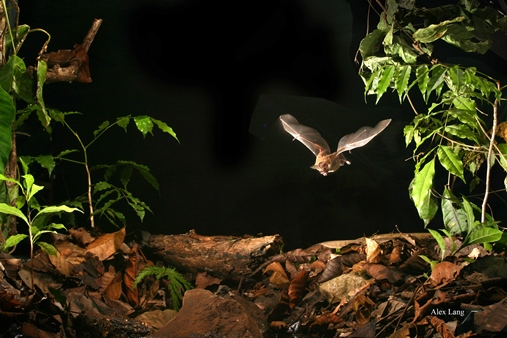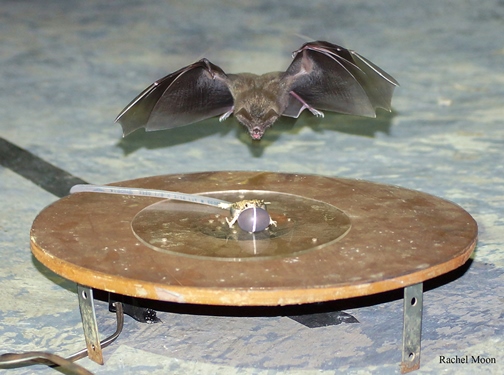SU's Taylor Again Publishes in 'Science' on Predator Bats, Frogs
 SALISBURY, MD---Dr. Ryan Taylor of Salisbury University’s Biological Sciences Department recently published in Science magazine with a team from the Smithsonian Tropical Research Institute in Panama on how “Bats Perceptually Weight Prey Cues Across Sensory Systems When Hunting in Noise.”
SALISBURY, MD---Dr. Ryan Taylor of Salisbury University’s Biological Sciences Department recently published in Science magazine with a team from the Smithsonian Tropical Research Institute in Panama on how “Bats Perceptually Weight Prey Cues Across Sensory Systems When Hunting in Noise.”
The article is Taylor’s third appearance in as many years in Science, considered one of the world’s top scientific academic journals.
“We live in an increasingly urbanized world and with that comes more noise,” Taylor said. “There have been a number of studies on how anthropogenic (human induced or created) noise influences bird communications, but we don’t know much about the impacts on other species.”
Noise pollution, according to the study, has been linked to lower survival and reproduction because it masks environmental cues and makes it hard for animals to hear moving prey or approaching predators.
“For our bats,” Taylor added, “the positive take away is that they don’t seem to be bothered by the noise, as they are able to switch their modes of detecting prey.” The fringe-lipped bats change from passively listening to the túngara frog mating calls to using high-frequency echolocations to detect the movement of calling frogs, he explained.
 Taylor helped design the experiment, including two robotic frogs used to mimic mating calls and vocal sac expansion when placed in a flight cage with the bats.
Taylor helped design the experiment, including two robotic frogs used to mimic mating calls and vocal sac expansion when placed in a flight cage with the bats.
Taylor has been involved with research at the Smithsonian Institute for over a decade and has taken 12 undergraduates and four graduate students from SU to Panama to assist with field and lab work. Accompanying him this summer were graduate student Andrew Cronin of Annapolis, MD; senior Hakeem Bushera of Gaithersburg, MD; and Tyler Bowling, a recent graduate from Waldorf, MD.
Cronin, who is pursuing a master’s in applied biology, said he has learned much from Taylor in the field: “His capacity to unpack data and search for the most interesting question has been incredibly revealing. I have also been exposed to cutting-edge research in the field of animal behavior, and have met some prominent researchers.”
Taylor’s first appearance in Science was a co-authored article in July 2013 on the multisensory components of túngara frog mating signals. In January 2014, his team again published on how rival frogs and the predator bats eavesdrop on such signals. Science is published by the American Association for the Advancement of Science.
“This represents a huge amount of work, a continuing international collaboration and world class science,” said Dr. Kim Hunter, an SU biology colleague who collaborates with Taylor at the Smithsonian. Dr. Karen Olmstead, dean of SU’s Richard A. Henson School of Science and Technology, added: “Not only does Dr. Taylor’s research program provide new insights into how nature works, it also provides outstanding opportunities for students to engage in scientific investigations.”
Bushera, a biology major and communication arts minor who has worked in SU’s Taylor-Hunter Lab for two years, said: “Working alongside Dr. Taylor has increased my knowledge more than any course. To be a part of research that employs technology not being used by any other lab is an experience I appreciate greatly.”
Taylor has received approximately $1.5 million in National Science Foundation funding over the years to support his research.
Pictured, top, is a fringe-lipped bat (photo credit: Alex Lang). Pictured, bottom, is a bat approaching a robotic frog (photo credit: Rachel Moon).
For more information call 410-543-6030 or visit the SU website at www.salisbury.edu.
